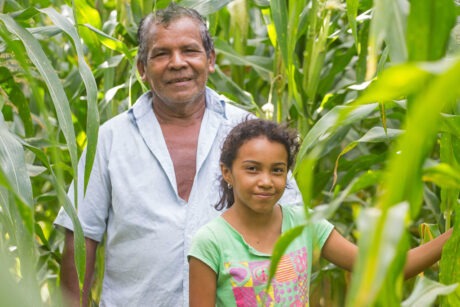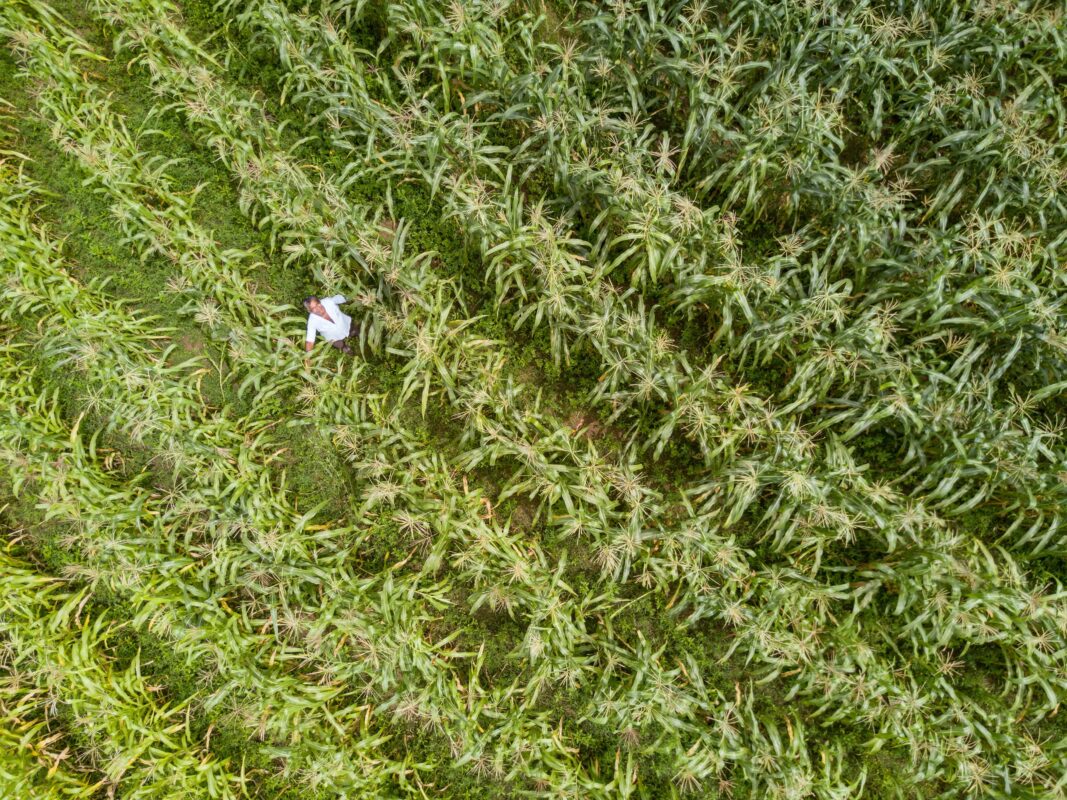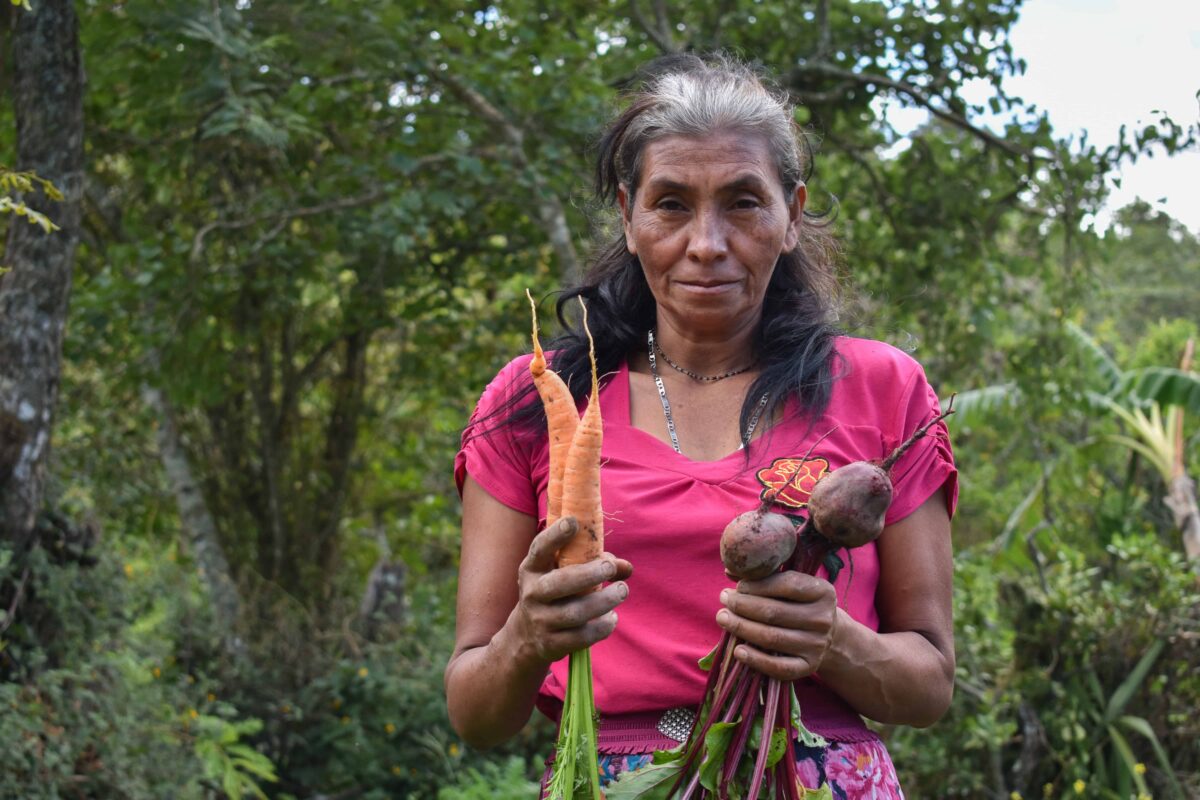Namasigue, HondurasA dozen squirming babies and their young mothers are lined up outside of Petronila Carcamo’s home in Chaguiton, a small rural town in the southern Dry Corridor of Honduras. Today is weigh day.
The mothers huddle together holding their babies and chatting as they wait for their chance to see if their children are growing at a healthy rate. One by one, they hand over their babies to Carcamo, who gently places them in a swing hung over a tree branch that functions as a scale.
“Congratulations! Your baby is growing and is at a normal weight,” she calls out along with the number on the scale for the babies on track. Their height is also recorded before being handed back to their mothers.
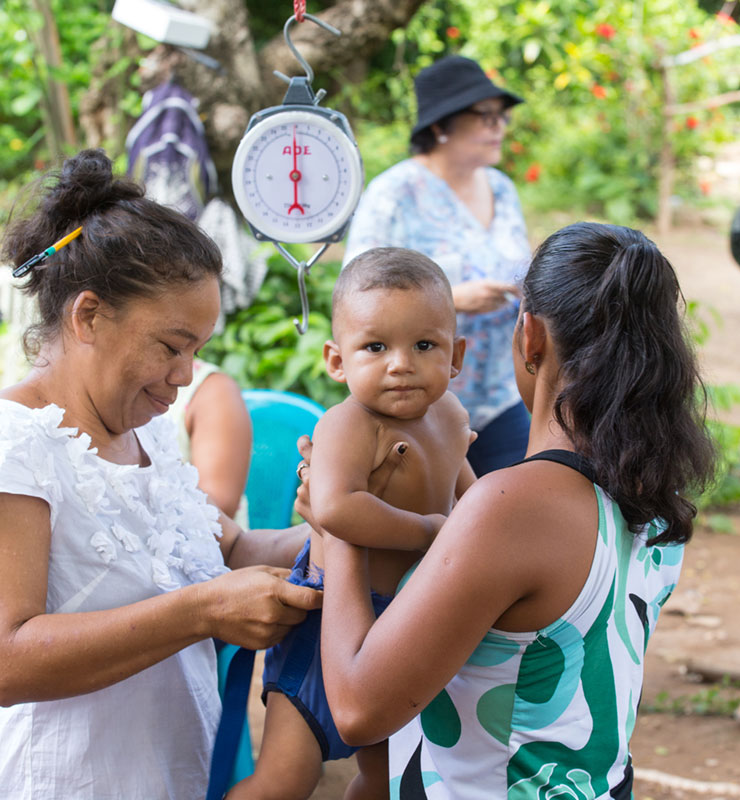
For those underweight or falling behind in height, an on-site nutrition counselor provides advice that can mean the difference between thriving and malnutrition. On this day, only one baby and mother need to visit the counselor- a sign that, for many, the monthly visits are resulting in changes at home and healthier babies.
Carcamo, a mother herself of a 2-year-old daughter and 9-year-old son, turns her front yard into a pop-up clinic once a month for the 42 kids in her neighborhood who are younger than two years old. In between growth check-ins like this, she visits the families to make sure their youngest members are staying healthy.
As a volunteer nutrition monitor, she is a critical part of a project known as the Dry Corridor Alliance – PROSASUR, an acronym that roughly stands for “Promoting Food Security in the South” in Spanish.

Operating in 12 municipalities in the southern departments of Choluteca and El Paraíso, the project is implemented by Associés créatifs internationaux in partnership with the Honduras Strategic Investment Office, Investir-H. It is one piece of the larger Alliance des corridors secs and receives funding from the World Bank through the Programme mondial pour l'agriculture et la sécurité alimentaire.
Carcamo has a busy role with a big responsibility, but one that she knows is important for her community.
“I decided to do it because you have to take advantage of projects like this. Because of this project, they’re practicing things that they’ve never done before. We can see when children are gaining or losing weight," dit-elle.
Fighting malnutrition in first 1,000 days of life
Children in the Dry Corridor region of Honduras – so-called because of its intense rainy season interrupted by long periods of drought due to climate change – are at increased risk of malnutrition due to the food insecurity associated with extreme climate.
Selon le Banque mondiale, 58 percent of children younger than age five in the Dry Corridor suffer from chronic malnutrition, characterized as underweight, with stunted growth, and with micronutrient malnutrition. These problems early in life can have permanent consequences, explains Ninoska Bulnes, a medical doctor and the nutrition and health component lead for the project.
“Their growth directly indicates their cognitive development, which has to do with abstract thinking and all of the skills that the baby needs from preschool to adolescence," dit-elle. “Everything that happens in those first 1,000 days indicates their quality of life. The more malnutrition we have, then it is a population with a much higher incidence of chronic illnesses.”
By intervening early, the project aims to prevent these problems. It works with 3,000 households with children age five and younger, y compris 3,750 kids under two, as well as with pregnant women. On the front lines are trained community nutrition monitors like Carcamo who are the first to detect the signs of malnutrition and refer families and children for more intensive counseling and support.
A goal of the effort is to diversify diets to provide key nutrients to growing minds and bodies, but this can be difficult in an area plagued by poverty and unpredictable harvests. Nutritious foods can be hard to come by and expensive.
“Keeping in mind that these are families that find themselves in extreme poverty, one of the biggest challenges is diversity of diet and behavioral change,” says Bulnes. « The nutrients that we’re most looking for are those than substitute or contribute to improving iron deficiency, which is connected to development, especially in children’s brains and intelligence. Cheese products and proteins are essential for growth. »
Through initiatives like counseling on dietary guidelines, feeding practices, food safety and sanitation, and establishing small gardens, the project works with families to overcome those barriers.
Though only six months into the project, parents are already seeing progress in their children, including Karen Oneyda Cruz, whose son Branden is one of the children Carcamo supports.
“Last month I brought my son to be weighed, and he lost weight. Now in this month, he gained weight. I think it’s good to bring them for weighing because that way you see the change," dit-elle.
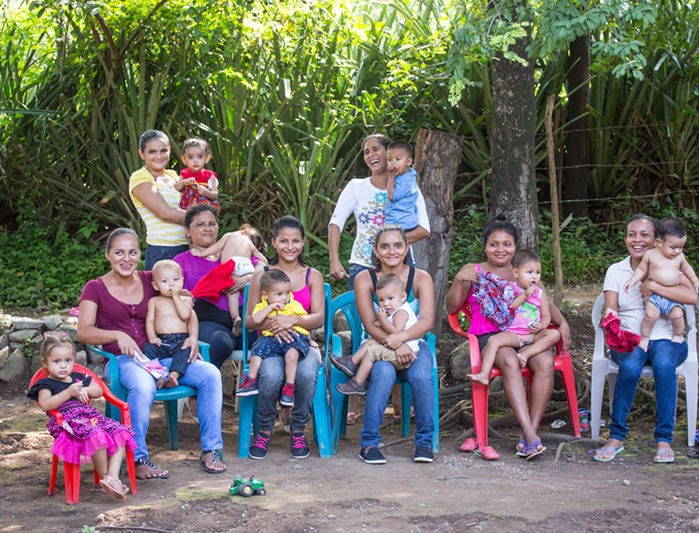
Tackling health holistically: Eau, sanitation and nutrition
Dans le couloir sec, nutrition problems are compounded and interconnected with others—including a lack of clean water, dirt floors, and unsafe cook stoves to name a few. Nutrition counseling and support alone can only go so far, explains Bulnes. Par exemple, a healthy diet can’t protect you against water-borne diseases or worms, a common problem when children eat and play on dirt floors.
“We describe a healthy home as one that has an improved floor, that has a stove, that has water harvesting, roof improvements, etc.. That’s what the project purports as well- achieving a healthy home, but at the same time the people have the knowledge and put in place key practices that assure their improvement of the health and hygiene within the home.,” she explains.
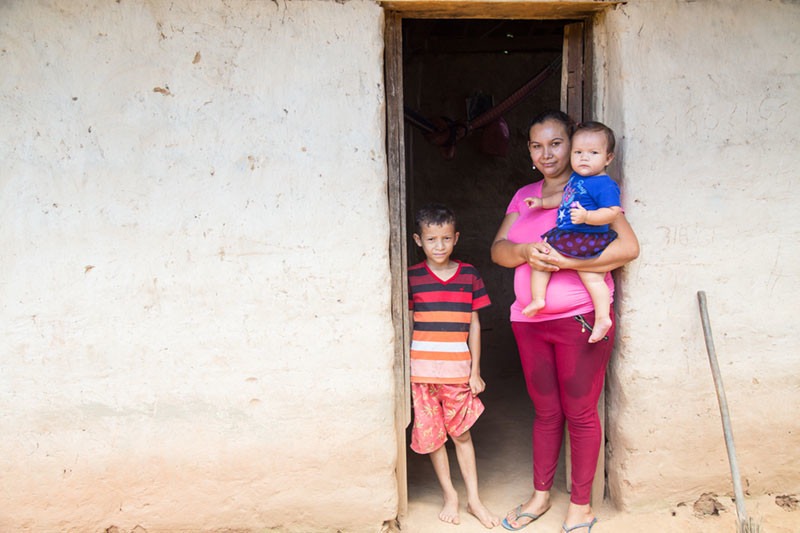
Pour cette raison, the project pairs nutrition support with small home improvement projects like paving floors, installing latrines and more efficient stoves, and constructing rainwater harvesting systems to collect and store the most valuable commodity in the region for use in the household and fields during the long stretch of drought.
“We’re not only talking about telling a mom that it’s important to wash her children’s hands and how to wash their hands,” says Bulnes. « If they don’t have a faucet, if they don’t have a water harvesting system, they don’t have the instruments that will help them adopt the practice. »
The project expects to improve 2,000 households with these projects and, dans le processus, raise the health of thousands of the region’s children.
Carcamo’s family will be getting a paved floor, a water filter and a clean cook stove. Cruz is due to receive a new floor, water filter and latrine.
“I think that it will help my children so they don’t get sick, they grow, and what I wish for them will come true,» dit Cruz.
A community at work
With a problem as widespread as malnutrition, the solution requires input from the entire community.
“We need participation of citizens, of local authorities, household members, health volunteers and promoters in the monitoring of nutrition and growth of each of these children, and obviously to provide them access to health services when we detect a problem through our monitoring,” says Bulnes.
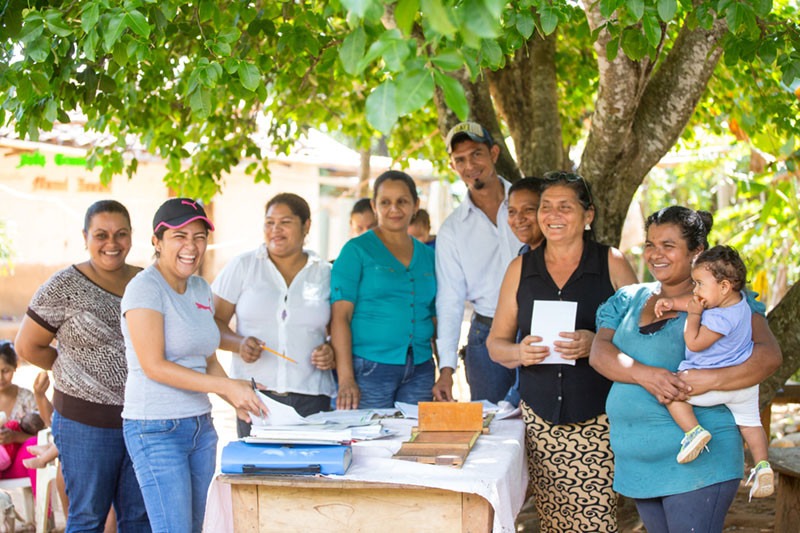
In addition to local monitors like Carcamo, the project relies on a network of other volunteers who reinforce the nutrition messages to their neighbors and help them stay on track, as well as key staff known as promoters, who serve as a support system to the volunteers.
The promoters make regular visits to the communities, helping out on weigh day, motivating families and making sure they have the knowledge and services they need.
Nutrition Promoter Olman Orriel Aplicano says that it is rewarding work and it is also critical to the region he calls home.
“It’s beautiful when the child reaches that expected weight. “My hopes and vision are that we improve conditions. My goal is that there are not children in the state of malnutrition; that they grow well and with a strong mind so that when they go to school they can learn well. »
Il ajoute, “If we want that child to have a future, we have to watch over their present.”
With reporting from Honduras by Evelyn Rupert and Amalia San Martin.
